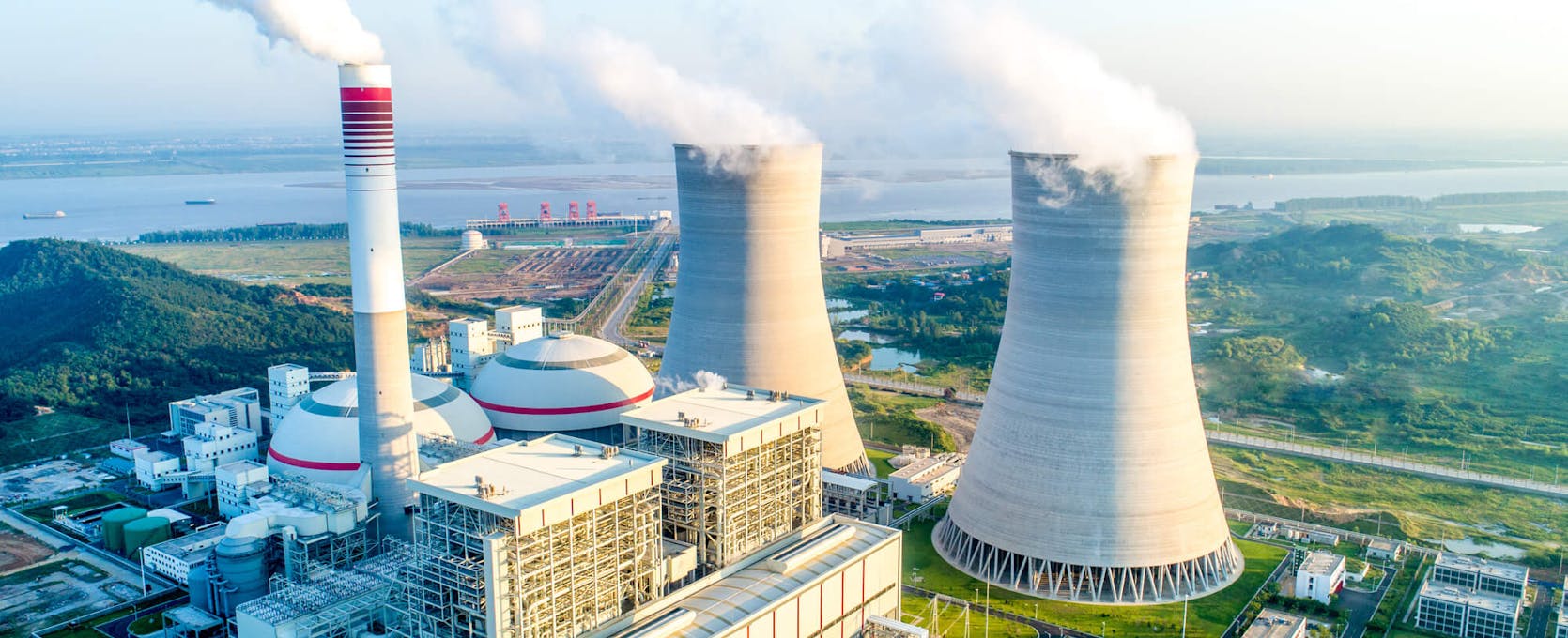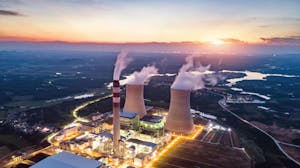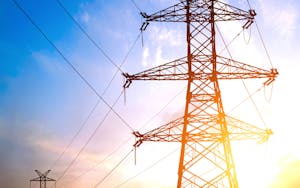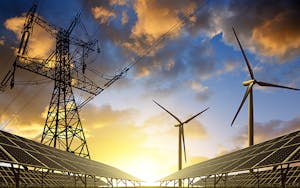
Inflation Reduction Act Tax Credit Solutions
Inflation Reduction Act Tax Credit Solutions

Thomas E. Unke
CPA
Partner

Joel M. Laubenstein
Principal

Cory R. Wendt
Principal

David Capitano
CPA
Partner

Gideon Gradman
Baker Tilly Capital, LLC Managing Director

Donald N. Bernards
CPA
Partner

Jeffrey J. Petrell
J.D., CPA, CGMA
Partner

Michelle Abel
J.D.
Principal

Tyler R. Inda
J.D.
Principal

Bryan Halpin
Director

Robert Moczulewski
CPA
Director
Maximize tax credits. Save on project costs. Create community impact.
The IRA requirements are everchanging and only a limited number of tax credits are offered. Lean on our specialists to help your organization effectively position your project to maximize and receive eligible Inflation Reduction Act tax credits.
What is the Inflation Reduction Act?
The Inflation Reduction Act of 2022 includes the largest energy incentive effort in U.S. history. It builds on the energy initiatives included in the American Reinvestment Recovery Act of 2009, generating opportunities for organizations across various industries to receive tax credits for implementing clean energy solutions.
The IRA includes more than 70 investment, production and excise credits designed to facilitate the transition to cleaner energy production, promote advanced manufacturing, encourage the adoption of clean vehicles (CVs) and reduce greenhouse gas emissions through the use of alternative fuels and energy efficient technologies. Additionally, significant enhancements have been made to the U.S. Department of Agriculture (USDA) and Department of Energy (DOE) loan programs.
IRA services
The IRA is complicated, and guidance and compliance requirements continue to be released. Baker Tilly’s energy, tax and industry specialists can help your organization understand the complexities and how to effectively position your project to receive and maximize eligible credits.
- Provide technical expertise to help organizations understand the credits and identify potential steps to take to secure the credits
- Determine project eligibility and develop enterprise strategies to leverage IRA opportunities
- Manage development projects to maximize available credits (e.g., prevailing wage and apprenticeship, domestic content requirements)
- Help ensure compliance with requirements
- Advise on how IRA credits align with other aspects of an organization’s capital stack
- Generate workpaper files to support investment tax credit claims
- Provide funding support and tax credit monetization or transfer
New IRA guidance
IRA guidance is everchanging, and we'll keep you informed. Our specialists do a deep dive into proposed, final and updates to IRA regulation. Our insights and key takeaways can help your organization maximize and receive eligible credits and remain compliant.
Explore the IRA regulatory guidance and check back here for continued updates.
Navigating the IRA’s latest supplemental rule around hydrogen production tax credits
Proposed regulations aim to facilitate tax credits for clean hydrogen production. To receive hydrogen production tax credits, producers are required to obtain emissions values from the DOE. This move highlights the delicate balance between environmental standards and industrial growth in the hydrogen industry.
Tax-exempt organizations have a new cash flow opportunity
Explore how tax-exempt organizations can navigate section 6417 of the Inflation Reduction Act to maximize their benefits. The elective payment mechanism for applicable credits can affect the taxable year for non-filing entities and the treatment of grants and forgivable loans for clean energy projects.
The section 45X tax credit
The enactment of section 45X of the Inflation Reduction Act offers tax credits to U.S. companies manufacturing clean energy technologies with eligibility covering solar, wind, battery technology and critical minerals. Despite its benefits, navigating section 45X creates compliance challenges and risks of recapture, but Baker Tilly offers comprehensive support to maximize benefits through eligibility confirmation, strategic planning, compliance guidance and accurate credit substantiation.
What is the advanced manufacturing investment tax credit (section 48D)?
The advanced manufacturing investment tax credit (section 48D) provides a direct dollar-for-dollar tax reduction in hopes of boosting U.S. manufacturing, particularly in semiconductors and renewable energy, under the Inflation Reduction Act. Eligible taxpayers can receive a government payment equal to their investment credit, offering immediate financial benefits, but compliance challenges and precise documentation are crucial to avoid penalties or credit forfeiture.
Explore the available credits
There are more than 70 available tax credits within the IRA to facilitate the clean energy transition. What is your organization eligible for? Get started with an IRA specialist.
Get started with IRA
- Evaluate your project landscape for projects that involve energy efficiency, renewable energy or other eligible components under the IRA – prior, current or future projects.
- Refresh feasibility assessments on projects you may be considering and put a development plan in place for those you wish to move forward – conducting activities now may preserve credit(s) and optimize value.
- Understand what “begun construction” means in practice and determine if action on a project is needed sooner than later to minimize future compliance burden.
- If project is currently underway, assess options to defer or modify completion to recover benefits from the IRA.
Guiding insights

Clock is ticking for manufacturers to get maximum tax benefits on new projects under the Inflation Reduction Act
The clock is ticking for manufacturers to get maximum tax benefits through Inflation Reduction Act.
How contractors can take full advantage of the Inflation Reduction Act
In this article, Baker Tilly's construction specialists explore the opportunities that the Inflation Reduction Act is presenting to contractors and the steps they need to implement to take full advantage of those opportunities.
The Inflation Reduction Act's key impacts on energy credits as it pertains to multifamily housing
The Inflation Reduction Act (IRA) was signed into law and has many benefits for multifamily housing pertaining to energy credits.
Pre-filing registration portal for Inflation Reduction Act credits: a how-to guide
Watch this video for help with the IRA and CHIPS Act tax credits pre-filing registration tool.
What public sector entities need to know about the Inflation Reduction Act
Inflation Reduction Act provides unique funding opportunities for public sector organizations.
How to maximize Inflation Reduction Act federal funding opportunities
Discover how to upgrade, modernize and innovate utility infrastructure with Inflation Reduction Act (IRA) incentives and opportunities.
Taking advantage of the Inflation Reduction Act
Watch our Inflation Reduction Act video for colleges and universities, governments and not-for-profit organizations.
Healthy Outcomes: The Inflation Reduction Act and its effect on healthcare providers
Listen to our Healthy Outcomes podcast episode for a discussion about the Inflation Reduction Act and effect on healthcare provider organizations.
On-demand webinars

Inflation Reduction Act: What's new and why it matters
The Inflation Reduction Act (IRA) created game-changing opportunities through energy incentives and tax credits. In the year since the IRA was signed into law, there have been significant updates in guidance and regulations.
Inflation Reduction Act: what manufacturers need to know now
Watch this on-demand webinar discussing what manufacturers need to know about the Inflation Reduction Act of 2022. Those that take action now will be better positioned to maximize their credit opportunities.
What the Inflation Reduction Act means for the real estate and construction industries
The Inflation Reduction Act has created game changing opportunities for the real estate and construction industries through energy incentives and tax credits. Learn more through these series of on-demand webinars.
What public sector entities need to know about the Inflation Reduction Act
Watch this Baker Tilly webinar to learn what the Inflation Reduction Act could mean for public sector organizations.
Inflation Reduction Act of 2022: provisions supporting tribes and native communities
Watch this on demand webinar on the Inflation Reduction Act of 2022 and the provisions supporting tribes and native communities.
Inflation Reduction Act: what higher education institutions need to know now
Colleges and universities can receive tax credits and federal funding for qualifying energy and efficiency projects under the Inflation Reduction Act of 2022.
Inflation Reduction Act: What healthcare providers need to know now
Watch our on-demand webinar to discuss The Inflation Reduction Act (IRA) and what providers need to know
How dealerships can maximize Inflation Reduction Act credits webinar
Listen to dealership specialists for an informational webinar focusing on how the Inflation Reduction Act (IRA) is impacting auto dealerships and how you can take advantage of various tax credits.
Inflation Reduction Act energy tax credits for your not-for-profit
Join Baker Tilly’s not-for-profit specialists, Karen Gries and Larry Mohr, as they discuss how NFPs can benefit from the Inflation Reduction Act (IRA) energy tax credits.
IRA FAQ
The Inflation Reduction Act includes four broad areas of credits. Many of these credits start with a base amount and can be increased by a factor of five if a project pays prevailing wages and employs apprentices. More details are found in the overview. Baker Tilly advisors are available to help address your project’s specific needs and requirements.
- Clean energy production and investment: Production tax credit (current section 45 and new section 45Y), investment tax credit (current section 48 and new section 48E clean electricity investment credit)
- Advanced manufacturing: Advanced energy project credit (section 48C), advanced manufacturing production credit (section 45X)
- Electric vehicles and alternative fuels: Clean vehicle credit (section 30D), previously owned clean vehicles (section 25E), new credit for qualified commercial clean vehicles (section 45W), alternative fuel vehicle refueling property (section 30C), biodiesel and renewable diesel used as fuel credit (section 40A), alcohol fuel, biodiesel and alternative fuel mixtures credit (section 6426), new sustainable aviation fuel credit (section 40B), new clean fuel production credit (section 45Z)
- Energy efficiency: Nonbusiness energy property credit (section 25C), residential clean energy credit (section 25D), new energy-efficient home credit (section 45L), energy-efficient commercial buildings deduction (section 179D)
The IRA provides for a direct offset to federal tax liability in the form of a tax credit. These credits represent a financial offset for an organization’s qualified construction or production costs, making the economics of many projects work better than they would have without the credits. Most credits are good through 2032, the longest U.S. “energy policy” time frame ever.
Three ways credits bring value to projects:
- Owner(s) can simply use the tax credit against their own tax liability, in most case back three-year and forward 22 years.
- If owner(s) doesn’t have tax liability or taxable income, they can now sell certain credits to another taxpayer* (Transferability).
- Tax – exempt owners can receive a “direct payment” in the form of cash payment from the IRS. These include state and local governments, not-for-profits, tribes and others (Direct Pay) for certain credits.
Essentially, the IRA Act is enabling all entities to utilize this legislation regardless of tax status.
*passive activity rules can apply
There are many types of funding opportunities under the IRA. The below provides an overview of the existing and new tax credits. Qualifying Energy Property projects has a broad definition and can include but is not limited to the following project types:
Existing credits with enhanced features are available in the following areas:
- Biomass
- Carbon capture utilization and storage
- Combined heat and power (CHP)
- Geothermal heating and cooling
- Low carbon fuels (biodiesel, ethanol, renewable diesel, renewable natural gas, propane)
- Waste to energy recycling
- Wind, solar, hydro electric
New credits are available for the following:
- Clean hydrogen
- Clean transportation fuels
- Electric vehicles (EVs) and EV infrastructure
- Energy efficiency construction
- Energy equipment and component manufacturing
- Energy storage (batteries)
- Qualifying biogas
- Solar production tax credit (PTC)
- Sustainable aviation fuels
- Zero emission nuclear
Connect with IRA leaders
Baker Tilly energy and tax specialists can help your organization navigate The Inflation Reduction Act tax credits and guide you along the steps to secure the maximum eligible credits. We leverage industry specialization to help evaluate your projects that involve energy efficiency, renewable energy or other eligible components under the IRA – prior, current or future projects.



















































































































